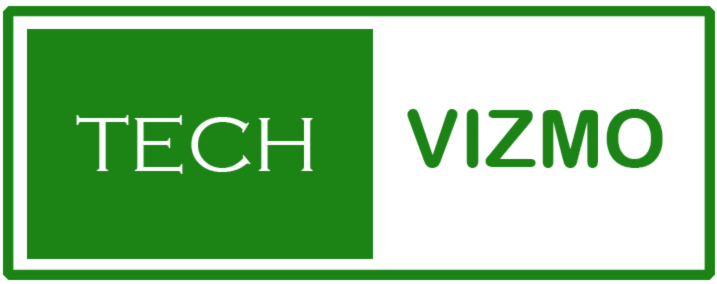The internet, a vast landscape of connection and information, also harbors a dark side: the rise of LRTSjerk (“lots of jerks”). These individuals thrive on excessive negativity, disrupting online communities, and creating a hostile environment. But understanding their behavior and taking proactive steps can help us create a more positive digital space.
LRTSjerk Decoded: A Behavioral Breakdown
Understanding the Different Shades of Online Toxicity:
While “LRTSjerk” might be a catchy term, it encompasses a range of negative online behaviors. Let’s break down these behaviors in more detail:
1. Hostile Communication:
This is the most common form of online toxicity. It involves aggressive and disrespectful communication tactics like:
Insults and Name-calling: LRTSjerks resort to personal attacks, using offensive language to belittle or humiliate others. This can be directed at individuals or entire groups.
Aggression and Threats: Their communication style is often laced with hostility and threats, creating a tense and intimidating environment for others.
Sarcasm and Mocking: Hostile communication can also manifest as constant sarcasm or mockery, designed to make others feel unwelcome or belittled.
2. Derogatory Comments:
LRTSjerks go beyond simple rudeness and delve into hate speech. Here’s how this manifests:
Prejudiced Attacks: Their comments are fueled by prejudice and bias against specific groups of people. This can include racism, sexism, homophobia, or other forms of bigotry.
Hateful Language: They intentionally use derogatory language and slurs to target individuals or groups.
Promoting Violence: In severe cases, LRTSjerks may advocate for violence or harassment against certain groups.
3. Spreading Misinformation:
LRTSjerks aim to disrupt online discourse by:
Sharing Fake News: They knowingly spread false information, often disguised as legitimate news sources, to manipulate online discussions.
Twisting Facts: They take facts out of context or distort them to create a specific narrative, often designed to sow discord or distrust.
Discrediting Trustworthy Sources: LRTSjerks may attack credible news outlets and experts to undermine public trust in legitimate information.
4. Cyberbullying:
This is the most extreme form of online toxicity, involving sustained harassment and attacks on individuals. Here’s what cyberbullying looks like:
Repeated Harassment: LRTSjerks may relentlessly target a person with offensive messages, threats, or personal attacks.
Social Isolation: They may try to exclude the victim from online communities or spread rumors to damage their reputation.
Emotional Distress: The constant harassment can cause significant emotional distress to the target, impacting their mental well-being.
The Impact of LRTSjerk: A Ripple Effect of Negativity
The actions of LRTSjerks have a significant negative impact on both individuals and online communities.
- Targeted Individuals: Online harassment can lead to emotional distress, anxiety, and even reputational damage for the targets.
- Online Communities: A constant barrage of negativity discourages valuable members from participating in discussions, leading to a decline in the quality of information and interaction.
- Overall Online Environment: LRTSjerks contribute to a toxic atmosphere that discourages open communication and stifles creativity.
The Psychology of the LRTSjerk: Why the Mask Slips Online
Several factors contribute to LRTSjerk behavior:
- The Disinhibition Effect: Anonymity, a double-edged sword of the internet, can embolden individuals to shed their inhibitions and behave in ways they wouldn’t dare in real life. This can lead to a decrease in self-consciousness, a sense of increased power, and a desire for attention, even negative attention.
- Lack of Empathy in Online Interactions: Online interactions often lack the emotional cues that foster empathy in face-to-face communication. This can make it easier for LRTSjerks to minimize the impact of their words and dehumanize their targets.
- Underlying Frustrations and Copycat Behavior: Sometimes, LRTSjerks may be venting deeper frustrations or issues in their lives through online negativity. Witnessing others engage in negativity online can also normalize such behavior for some.
Combating Online Negativity: Strategies for a Positive Online Space

While we may not be able to eliminate LRTSjerks, we can create a more positive online environment:
Combating LRTSjerks: Keeping Your Online Space Positive
The internet can be a fantastic tool for connection and collaboration, but unfortunately, it can also attract negativity. “LRTSjerks” (Long-Range Toxic Social Jerks) thrive on spreading negativity and hostility online. Here’s a breakdown of strategies to combat them and foster a healthy online community:
Identifying LRTSjerks:
Negativity Bias: LRTSjerks often focus on the negative aspects of everything. They may constantly criticize, complain, or belittle others’ ideas.
Hostile Language: These individuals resort to personal attacks, insults, and inflammatory language to disrupt conversations.
Disruption Tactics: LRTSjerks may go off-topic, derail conversations, or use sarcasm to shut down constructive discussion.
How to Deal with LRTSjerks:
Don’t Engage: Engaging with an LRTSjerk often fuels their negativity. It’s best to ignore them and focus on positive interactions within the community.
Reporting and Flagging: Most platforms offer reporting tools. If someone is persistently negative or harassing, report their behavior to the moderators.
Mute & Block: Don’t be afraid to mute or block users who negatively impact your online experience.
LRTSjerk Building a Positive Community:
Promote Respectful Debate: Encourage discussions where ideas are presented and challenged constructively. Focus on facts and avoid personal attacks.
Support & Uplift: Actively support positive contributions and uplifting content from other members. This reinforces positive behavior and creates a welcoming environment.
Celebrate Diversity: A healthy community embraces diverse viewpoints. Encourage respectful discussions where everyone feels comfortable sharing their perspectives.
Empowering Moderation:
Clear Community Guidelines: Clearly define acceptable behavior within your online space. This helps users understand expectations and empowers moderators to take action.
Trained Moderators: Provide moderators with training to effectively identify and address negativity. This could include conflict resolution skills and spotting red flags.
Consistent Enforcement: Enforce community guidelines consistently. This discourages bad behavior and shows users that negativity has no place in your space.
Promoting Digital Citizenship:
Education is Key: Educate users about responsible online behavior, including respecting others’ opinions and the importance of building a positive online environment.
Lead by Example: As a community leader, set the tone by promoting respectful discussions and positivity.
Community Building Activities: Organize online events or discussions that foster collaboration and connection. This strengthens the sense of community and discourages negativity.
By implementing these strategies, we can work together to keep online spaces positive and productive. Remember, everyone deserves to feel safe and respected when participating in online communities.
The Road Ahead: Creating a Future Free from Excessive Online Negativity
The future of online interactions holds promise for combating LRTSjerks.
- Technological Advancements: AI-powered moderation tools and potential biometric verification systems could help identify and hold LRTSjerks accountable.
- Shifting Social Norms: A focus on promoting digital citizenship and empowering online communities to self-regulate can foster a more respectful environment.
- Platform-driven Initiatives: Platforms can prioritize user wellbeing, be more transparent about their efforts, and implement stricter policies against negativity.
By working together—users, platforms, and technology developers—we can create a more positive digital space where everyone feels safe to connect, share ideas, and engage in constructive online interactions. The internet can be a powerful tool for good, and by addressing the issue of LRTSjerks, we can ensure it remains a space for connection, creativity, and positive communication.
Trending FAQs about LRTSjerks
What is an LRTSjerk?
An LRTSjerk (coined from “lots of jerks”) is a person who exhibits excessive negativity online. They engage in behaviors like hostility, hate speech, spreading misinformation, and cyberbullying.
How can I spot an LRTSjerk?
LRTSjerks often display red flags like:
- Using aggressive language and insults
- Making hateful comments targeting individuals or groups
- Spreading negativity and misinformation
- Derailing conversations and dominating discussions
What is the impact of LRTS jerks?
LRTS jerks can have a detrimental effect on both individuals and online communities. They can cause emotional distress, damage reputations, discourage valuable members from participating in discussions, and create a toxic atmosphere that stifles creativity.
How can I deal with LRTS jerks?
Here are some strategies:
- Don’t engage with them; engaging can fuel their fire.
- Report and flag their content: Most platforms offer reporting mechanisms.
- Promote respectful debate: Focus on presenting ideas, not attacking individuals.
- Build a supportive community: Foster a space where people feel safe expressing themselves.
What can be done to create a more positive online environment?
Several approaches can help:
- Technological advancements: AI moderation and potential biometric verification systems can aid in identification and accountability.
- Shifting social norms: Promoting digital citizenship and community self-regulation can foster respect.
- Platform-driven initiatives: Platforms can prioritize user well-being, be transparent about their efforts, and implement stricter policies.
Is it possible to eradicate LRTS jerks?
Eliminating them might be unrealistic, but significant progress can be made through a multi-pronged approach.
What can I do to be a more positive force online?
- Be respectful in your interactions.
- Challenge ideas constructively.
- Report negativity and support targets of harassment.
- Promote positive online communities.
By understanding LRTSjerks and taking action, we can work towards a more positive and constructive digital world for everyone.

Pingback: 8882381346 | What Does it Mean for Your Online Presence? - Tech Vizmo